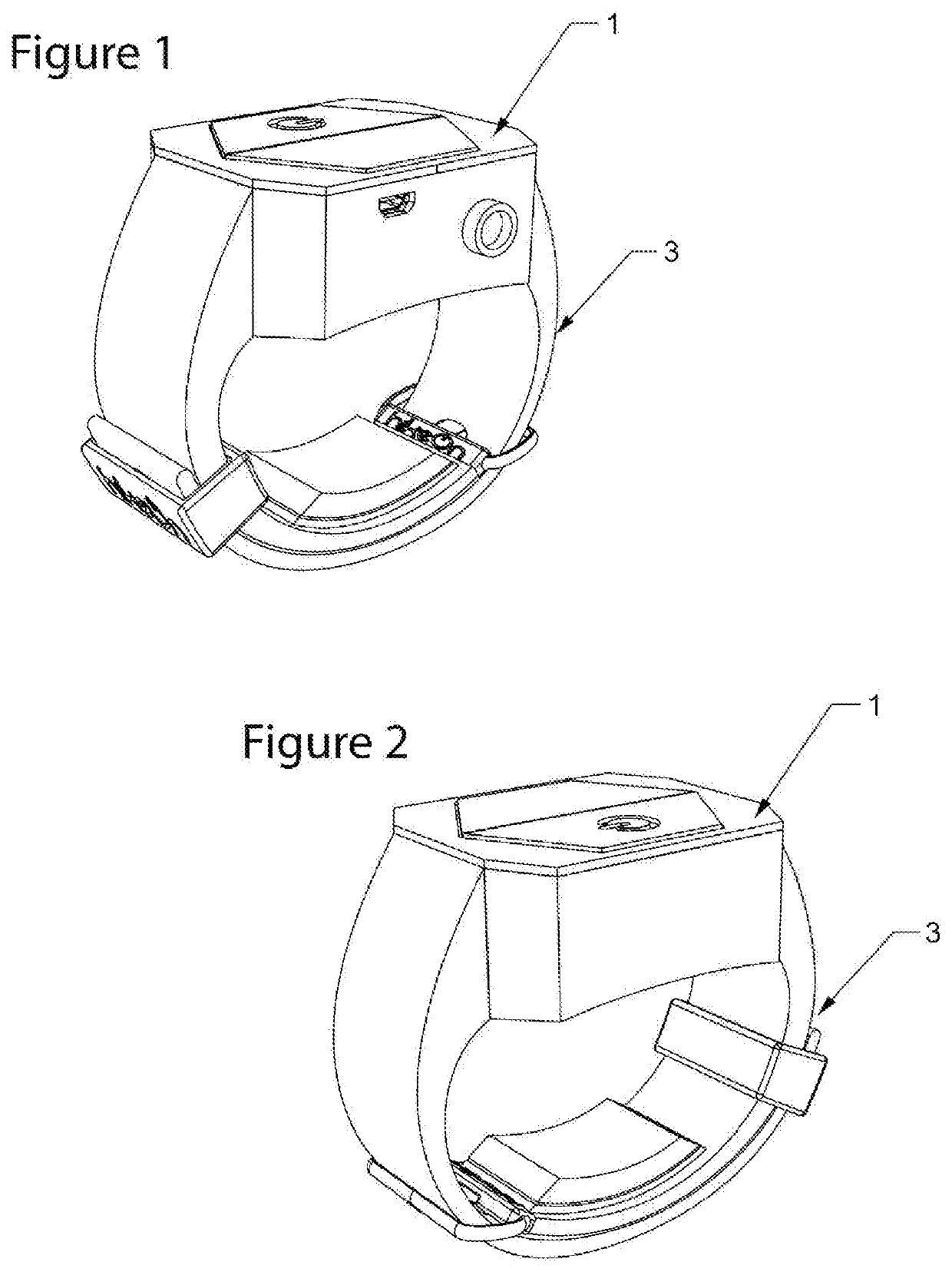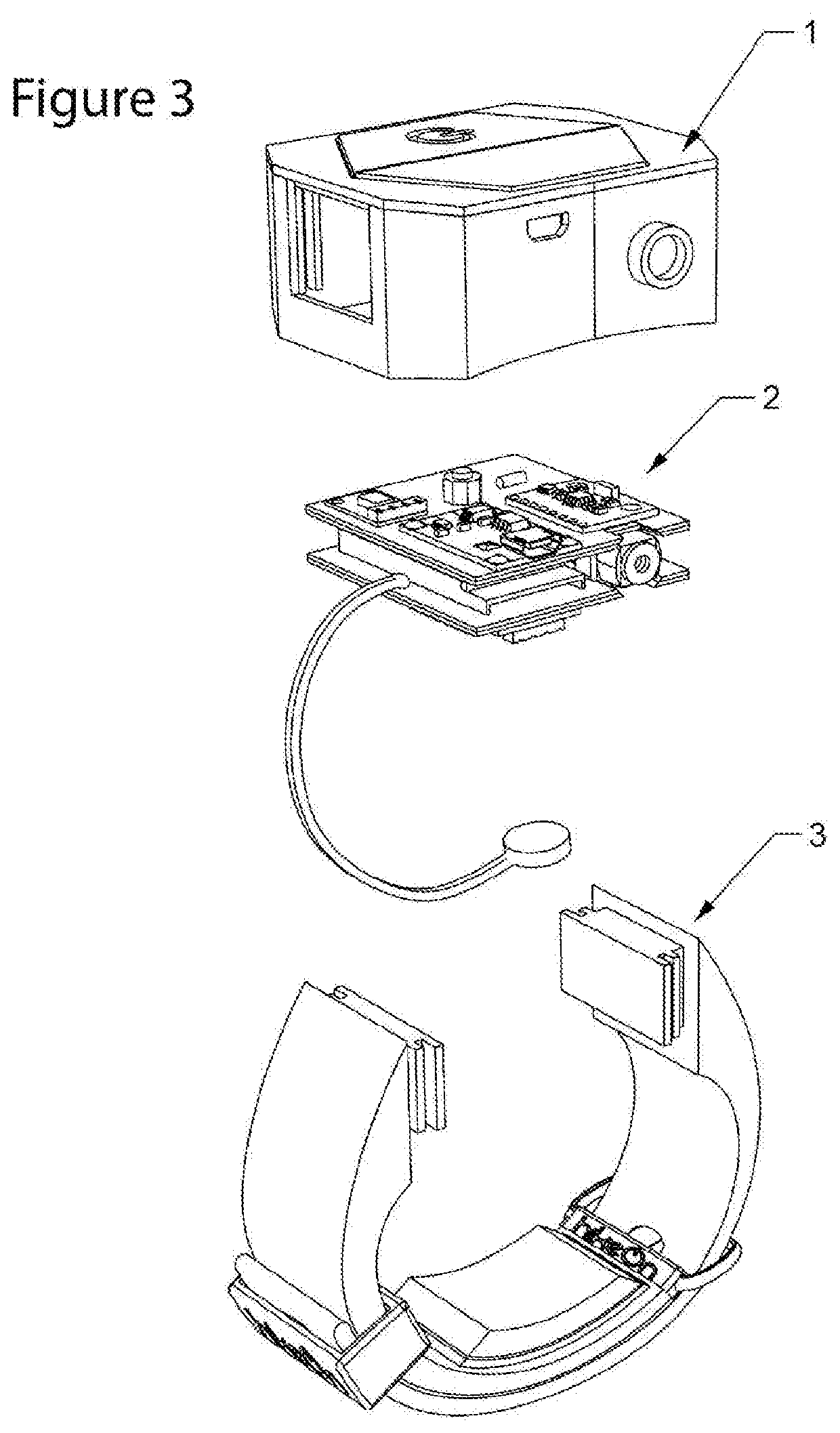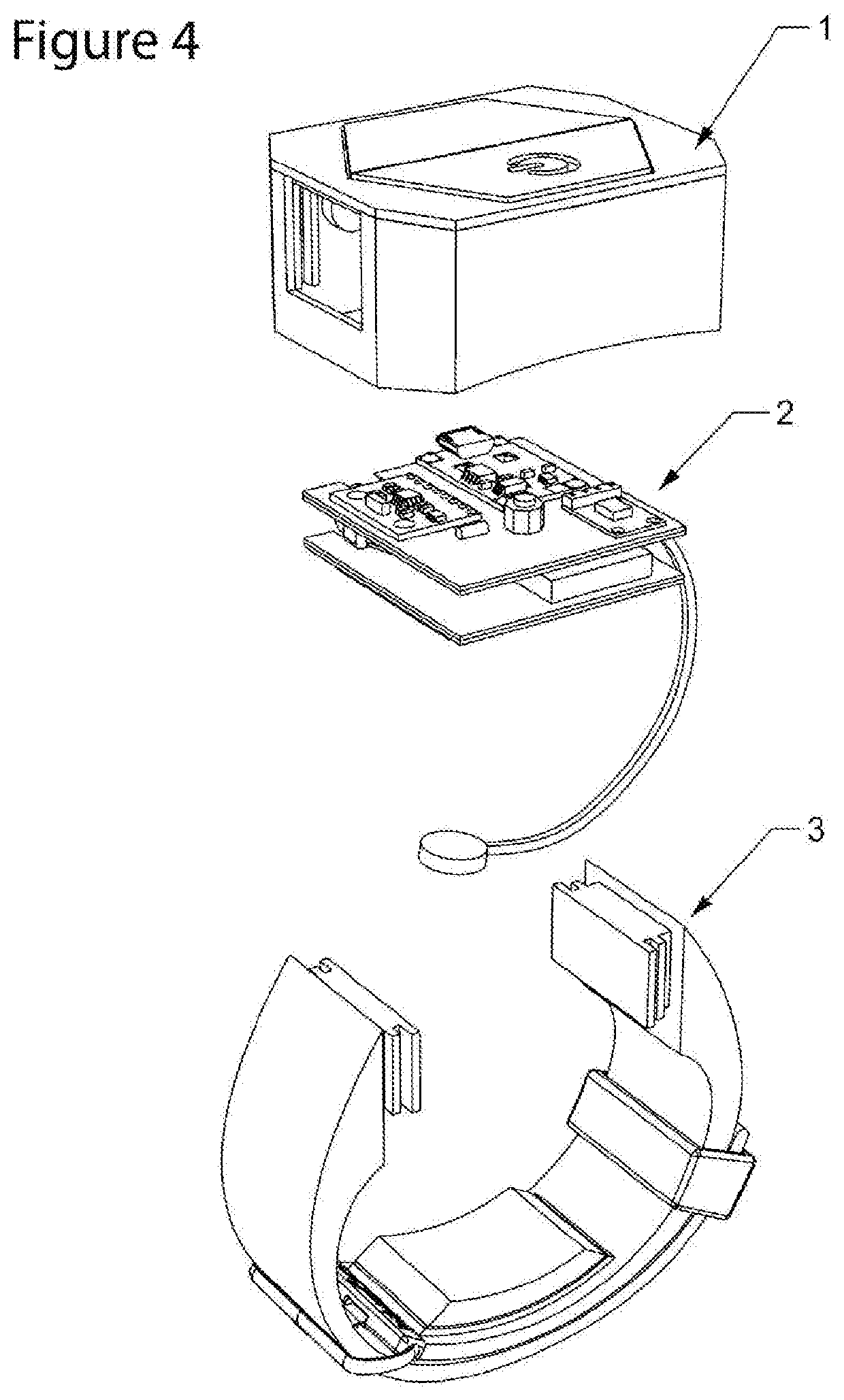Sensorial electronic device for the rehabilitation of patients with parkinson's disease
a sensorial electronic device and parkinson's disease technology, applied in the field of neurodegenerative diseases, can solve the problems of affecting the daily activities of people with parkinson's disease, affecting the posture of people, and affecting the ability to read the newspaper or ingest food, so as to reduce the freezing, reduce the tremor in the hand, and improve the posture
- Summary
- Abstract
- Description
- Claims
- Application Information
AI Technical Summary
Benefits of technology
Problems solved by technology
Method used
Image
Examples
Embodiment Construction
[0027]The sensory electronic device for the rehabilitation of patients with Parkinson's disease referred to in the following invention (FIGS. 1 and 2) generates constant intermittent vibrating impulses using a vibratory motor that can be modulated in speed, intensity, time and frequency. The device also has a visual guide that is emitted by a laser diode module that is activated by a gyroscope that detects the inclination of the device, when the inclination is between 0 and 45 degrees (taking as reference that the floor is 0 degrees and 45 degrees are following the natural movement of the arm upward) the laser will project on the ground a light in the form of a horizontal line. This system as a whole, is focused on treating and reducing motor symptoms caused by Parkinson's disease (tremor in the upper limbs, muscular stiffness, bradykinesia or slowness in movements, postural disruptions, Parkinsonian walking and freezing during walking). The vibration and the visual guide serve to g...
PUM
 Login to View More
Login to View More Abstract
Description
Claims
Application Information
 Login to View More
Login to View More - R&D
- Intellectual Property
- Life Sciences
- Materials
- Tech Scout
- Unparalleled Data Quality
- Higher Quality Content
- 60% Fewer Hallucinations
Browse by: Latest US Patents, China's latest patents, Technical Efficacy Thesaurus, Application Domain, Technology Topic, Popular Technical Reports.
© 2025 PatSnap. All rights reserved.Legal|Privacy policy|Modern Slavery Act Transparency Statement|Sitemap|About US| Contact US: help@patsnap.com



